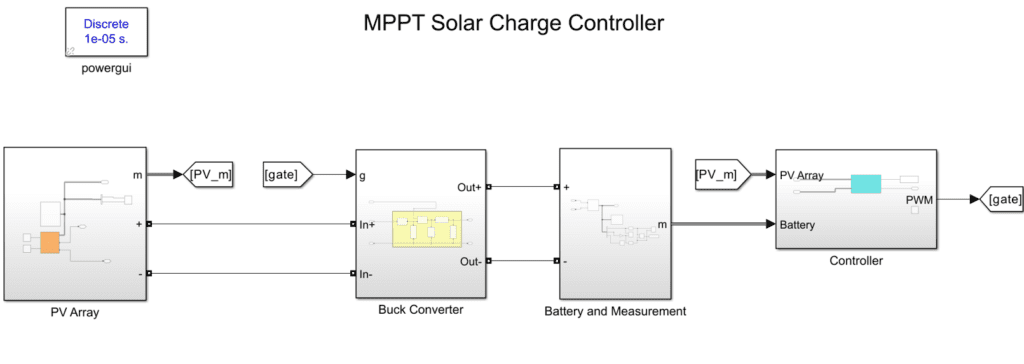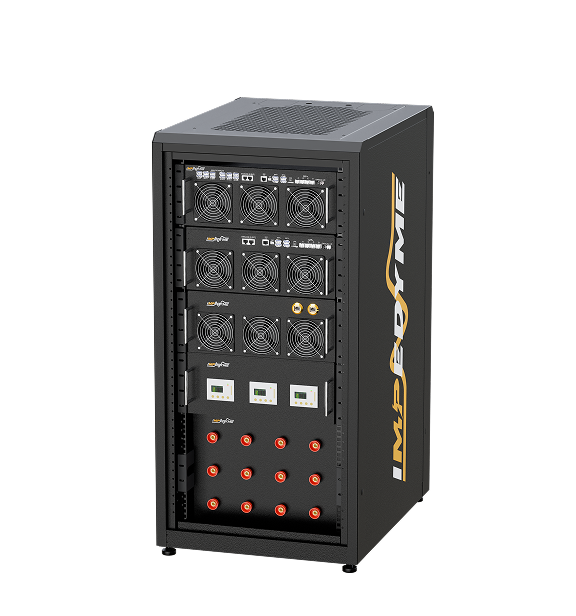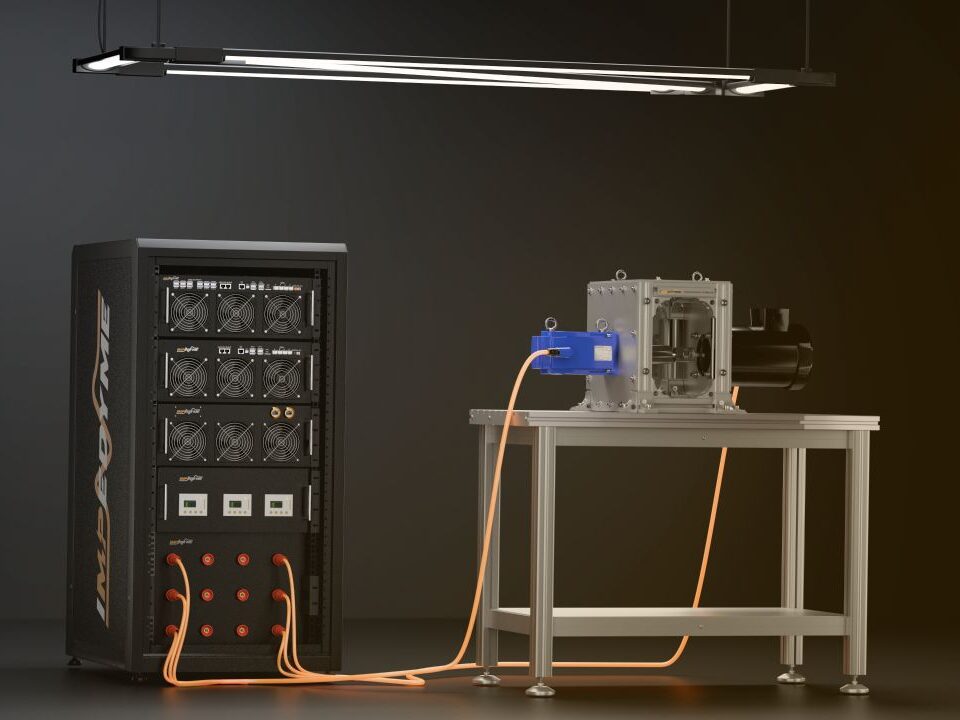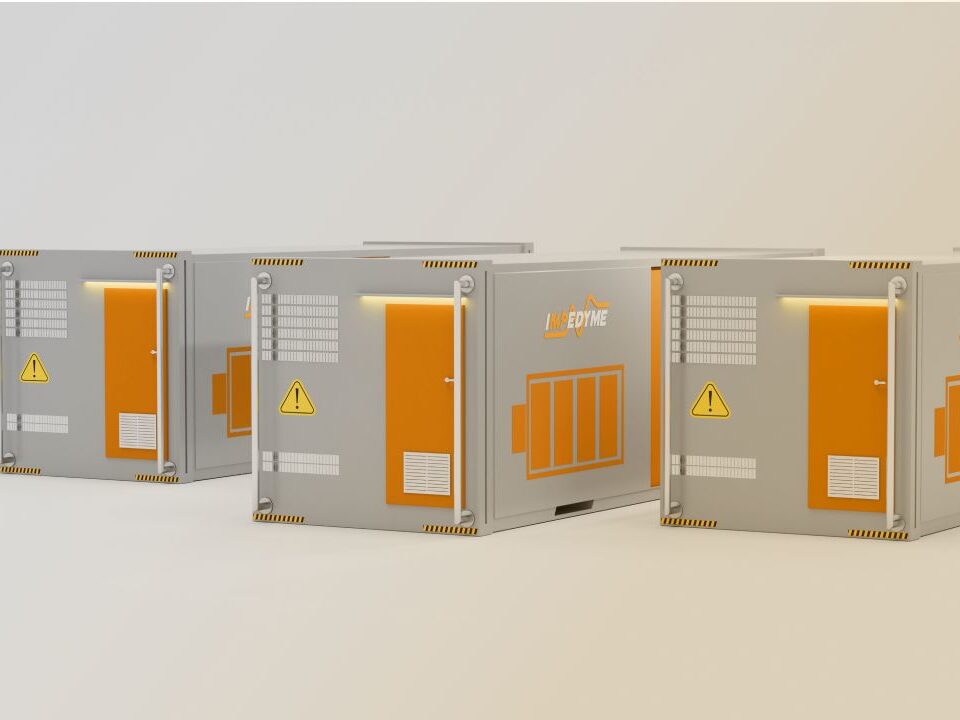
-
 Induction Motor
Induction Motor
-
 Automotive Electrical System Simulation
Automotive Electrical System Simulation
-
 DC/DC Bidirectional Converter
DC/DC Bidirectional Converter
-
 PWM Control for Brushless DC
PWM Control for Brushless DC
-
 BLDC Motor Control and Drive Simulation
BLDC Motor Control and Drive Simulation
-
 Electric Vehicle Fast Charger Simulation
Electric Vehicle Fast Charger Simulation
-
 DFIG Wind Turbine Simulation
DFIG Wind Turbine Simulation
-
 Dual Active Bridge
Dual Active Bridge
-
 EV Dynamometer Test Environment Simulation
EV Dynamometer Test Environment Simulation
-
 Electric Vehicle Simulation
Electric Vehicle Simulation
-
 Three-Phase Grid-Connected Inverter Using Direct-Q…
Three-Phase Grid-Connected Inverter Using Direct-Q…
-
 Three-Phase Grid-Connected Solar Photovoltaic
Three-Phase Grid-Connected Solar Photovoltaic
-
 Grid-Connected Rectifier
Grid-Connected Rectifier
-
 Grid-Tied Inverter System
Grid-Tied Inverter System
-
 Torque Control in a Hybrid Excitation Synchronous …
Torque Control in a Hybrid Excitation Synchronous …
-
 Wye-Delta Starting Circuit
Wye-Delta Starting Circuit
-
 IPMSM-Based Axle-Drive
IPMSM-Based Axle-Drive
-
 Simplified Parallel Hybrid Electric Vehicle
Simplified Parallel Hybrid Electric Vehicle
-
 Simplified Series Hybrid Electric Vehicle
Simplified Series Hybrid Electric Vehicle
-
 Series-Parallel Hybrid Electric Vehicle
Series-Parallel Hybrid Electric Vehicle
-
 Three-Phase Matrix Converter Simulation
Three-Phase Matrix Converter Simulation
-
 Venturini Modulation for Three-Phase Matrix Conver…
Venturini Modulation for Three-Phase Matrix Conver…
-
 Microgrid Frequency Regulation Using Vehicle-to-Gr…
Microgrid Frequency Regulation Using Vehicle-to-Gr…
-
 Three-Phase Modular Multilevel Converter
Three-Phase Modular Multilevel Converter
-
 Field-Oriented Control
Field-Oriented Control
-
 Interior Permanent Magnet Synchronous Generator
Interior Permanent Magnet Synchronous Generator
-
 Permanent Magnet Synchronous Machine
Permanent Magnet Synchronous Machine
-
 PMSM Rotor Angular Velocity
PMSM Rotor Angular Velocity
-
 PMSM-Based Electrical Traction Drive
PMSM-Based Electrical Traction Drive
-
 Maximum Power Point Tracking
Maximum Power Point Tracking
-
 Six-Phase Permanent Magnet Synchronous Machine
Six-Phase Permanent Magnet Synchronous Machine
-
 Synchronous Machine-Based Electrical Drive Simulat…
Synchronous Machine-Based Electrical Drive Simulat…
-
 Single-Stage Solar Inverter
Single-Stage Solar Inverter
-
 Three-Phase Cycloconverter Simulation
Three-Phase Cycloconverter Simulation
-
 Totem-Pole PFC Simulation
Totem-Pole PFC Simulation
-
 Twelve-Pulse Thyristor Rectifier
Twelve-Pulse Thyristor Rectifier
-
 Two-Wheeler On-Board Charger
Two-Wheeler On-Board Charger
-
 Vienna Rectifier Simulation
Vienna Rectifier Simulation
-
 High-Voltage Direct Current
High-Voltage Direct Current
-
 Wireless Power Transfer
Wireless Power Transfer

Comprehensive Documentation for Implementation of Maximum Power Point Tracking (MPPT) and Battery Charging for a Solar PV System
Table of Contents
- 1 Comprehensive Documentation for Implementation of Maximum Power Point Tracking (MPPT) and Battery Charging for a Solar PV System
- 1.1 Introduction
- 1.2 System Overview
- 1.2.1 What is Maximum Power Point Tracking (MPPT)?
- 1.2.2 Purpose of the Simulation
- 1.3 Key Features
- 1.3.1 MPPT Implementation using the P&O Algorithm
- 1.3.2 DC-DC Converter for Power Regulation
- 1.3.3 Three-Stage Battery Charging Algorithm
- 1.3.4 Load Management and Energy Utilization
- 1.3.5 Fault Detection and Protection Mechanisms
- 1.3.6 Maximum Power Extraction
- 1.3.7 Energy Storage
- 1.3.8 Grid Stability
- 1.3.9 Cost Savings
- 1.4 Simulation Objectives
- 1.5 Technical Description
- 1.5.1 System Configuration
- 1.5.2 Control Methodology
- 1.6 Advantages of MPPT-Based Solar Battery Charging Systems
- 1.7 Applications
- 1.7.1 Residential Solar Power Systems
- 1.7.2 Commercial and Industrial Solar Installations
- 1.7.3 Utility-Scale Solar Power Plants
- 1.7.4 Microgrids and Distributed Generation
- 1.7.5 Electric Vehicle (EV) Charging Infrastructure
- 1.7.6 Telecommunications
- 1.7.7 Agricultural Applications
- 1.7.8 Water and Wastewater Treatment
- 1.7.9 Research and Development
- 1.7.10 Education and Training
- 1.8 Simulation Benefits
- 1.9 Summary
- 1.10 Future Enhancements
- 1.10.1 Induction Motor
- 1.10.2 Automotive Electrical System Simulation
- 1.10.3 DC/DC Bidirectional Converter
- 1.10.4 PWM Control for Brushless DC
Introduction
This project focuses on implementing Maximum Power Point Tracking (MPPT) for a solar photovoltaic (PV) system using the Perturbation & Observation (P&O) algorithm. The extracted power is used to charge a lead-acid battery through a three-stage charging algorithm, ensuring efficient energy transfer and battery longevity.

System Overview
What is Maximum Power Point Tracking (MPPT)?
MPPT is a control technique used in solar PV systems to maximize power extraction under varying sunlight conditions. Key benefits include:
✔ Improved energy harvesting from solar panels.
✔ Real-time adaptation to environmental changes.
✔ Increased overall system efficiency.
✔ Optimized battery charging and utilization.
Purpose of the Simulation
This simulation is designed to:
✔ Implement the P&O algorithm to track the maximum power point (MPP) of the PV system.
✔ Optimize energy transfer from the PV array to the battery.
✔ Model and simulate a three-stage lead-acid battery charging process.
✔ Analyze system stability, efficiency, and response under dynamic conditions.
Key Features
MPPT Implementation using the P&O Algorithm
✔ Real-time voltage and current measurement for power computation.
✔ Dynamic perturbation to adjust the operating point and track MPP.
✔ Continuous adaptation to irradiance and temperature variations.
➡️ Benefit: Ensures maximum energy extraction under all sunlight conditions.
DC-DC Converter for Power Regulation
✔ Step-down (buck) converter for optimal battery charging.
✔ Pulse Width Modulation (PWM) control for efficient power conversion.
✔ Voltage and current regulation to prevent overcharging.
➡️ Benefit: Enables smooth and controlled energy transfer from the PV array to the battery.
Three-Stage Battery Charging Algorithm
✔ Bulk Charging: Maximum current supply until the battery reaches the absorption voltage.
✔ Absorption Charging: Constant voltage with decreasing current for full charge.
✔ Float Charging: Low current trickle charge to maintain battery state.
➡️ Benefit: Enhances battery lifespan and prevents overcharging.
Load Management and Energy Utilization
✔ Dynamic load analysis to optimize power distribution.
✔ Battery state-of-charge (SoC) monitoring for intelligent energy use.
✔ Protection against deep discharge and overvoltage conditions.
➡️ Benefit: Ensures reliable power supply and battery health.
Fault Detection and Protection Mechanisms
✔ Overvoltage and overcurrent protection for system safety.
✔ Short-circuit prevention and temperature monitoring.
✔ Automatic shutdown under fault conditions.
➡️ Benefit: Increases system durability and operational reliability.
Maximum Power Extraction
MPPT ensures that solar panels operate at their maximum power output, improving energy generation efficiency.
Energy Storage
Battery charging systems store excess energy for later use, ensuring continuous power supply and improving energy self-sufficiency.
Grid Stability
These systems improve grid stability by storing excess energy and releasing it during periods of high demand or low sunlight.
Cost Savings
By optimizing energy generation and storage, these systems reduce energy costs and improve economic efficiency.
Simulation Objectives
This simulation aims to:
✔ Validate the effectiveness of the P&O MPPT algorithm in a solar PV system.
✔ Analyze power flow and energy conversion efficiency.
✔ Model and optimize the three-stage battery charging process.
✔ Ensure safe and reliable operation through real-time fault protection.
Technical Description
System Configuration
- Input: Solar irradiance and temperature variations.
- Power Generation: Solar PV array.
- Power Conversion: DC-DC buck converter.
- Control Strategy: P&O MPPT algorithm.
- Energy Storage: Lead-acid battery with three-stage charging.
- Load: DC electrical loads with demand variation.
Control Methodology
✔ MPPT Control: Tracks the maximum power point using the P&O algorithm.
✔ Battery Charging Control: Implements a three-stage charging profile.
✔ Power Regulation: Adjusts DC-DC converter parameters for efficient power flow.
✔ Protection Mechanisms: Ensures system safety through real-time fault monitoring.
Advantages of MPPT-Based Solar Battery Charging Systems
✔ Maximized energy extraction from solar panels.
✔ Efficient power conversion and storage management.
✔ Extended battery life through optimized charging.
✔ Stable and reliable operation under variable environmental conditions.
Applications
Residential Solar Power Systems
- Home Energy Storage: MPPT and battery charging systems are used in residential solar PV systems to store excess energy for use during nighttime or cloudy days, improving energy self-sufficiency.
- Off-Grid Homes: In remote areas without grid access, MPPT and battery charging systems provide reliable power for off-grid homes, ensuring continuous energy supply.
Commercial and Industrial Solar Installations
- Rooftop Solar Systems: MPPT and battery charging systems are used in commercial and industrial buildings to optimize energy generation and storage, reducing energy costs and improving sustainability.
- Load Shifting: These systems enable businesses to shift energy usage to off-peak hours, reducing peak demand charges and improving energy efficiency.
Utility-Scale Solar Power Plants
- Grid Integration: MPPT and battery charging systems are used in large-scale solar farms to optimize power generation and integrate with the grid, ensuring stable and efficient operation.
- Energy Storage: These systems store excess energy generated during peak sunlight hours for use during periods of high demand or low sunlight, improving grid stability and reliability.
Microgrids and Distributed Generation
- Islanded Microgrids: MPPT and battery charging systems are used in islanded microgrids to provide reliable power in remote areas, ensuring continuous energy supply.
- Grid-Connected Microgrids: These systems optimize energy generation and storage in grid-connected microgrids, enabling seamless transition between grid-connected and islanded modes.
Electric Vehicle (EV) Charging Infrastructure
- Solar-Powered Charging Stations: MPPT and battery charging systems are used in solar-powered EV charging stations to optimize energy generation and storage, ensuring efficient and reliable operation.
- Bidirectional Charging: These systems enable bidirectional charging, allowing EVs to feed power back into the grid or home during peak demand periods.
Telecommunications
- Base Station Power Systems: MPPT and battery charging systems are used in telecom base stations to ensure stable power supply, optimizing performance and energy efficiency.
- Backup Power Systems: These systems provide reliable backup power during grid outages, ensuring continuous operation of critical telecom infrastructure.
Agricultural Applications
- Solar-Powered Irrigation: MPPT and battery charging systems are used in solar-powered irrigation systems to optimize energy generation and storage, providing a sustainable and cost-effective energy solution.
- Rural Electrification: These systems provide reliable power for agricultural operations and rural communities, improving access to electricity in remote areas.
Water and Wastewater Treatment
- Solar-Powered Water Pumping: MPPT and battery charging systems are used in solar-powered water pumping systems to optimize energy generation and storage, ensuring efficient and reliable operation.
- Desalination Plants: These systems provide a sustainable energy source for desalination plants, supporting water supply in arid regions.
Research and Development
- Prototype Testing: Simulations are used to test and validate MPPT and battery charging systems, reducing the need for physical testing and accelerating development.
- Control Strategy Development: Simulations help develop and optimize control algorithms for MPPT and battery charging systems, ensuring efficient and reliable operation.
- Fault Analysis: Simulations help study the behavior of these systems under fault conditions, improving system reliability and safety.
Education and Training
- Academic Research: Simulations are used in academic research to study the performance and optimization of MPPT and battery charging systems.
- Professional Training: Simulations are used in training programs for engineers and technicians, providing hands-on experience with these systems.
Simulation Benefits
By utilizing this simulation, engineers can:
✔ Optimize MPPT control strategies for real-world applications.
✔ Improve solar energy utilization and battery charging efficiency.
✔ Test system performance under different environmental and load conditions.
Summary
This project provides a comprehensive framework for implementing MPPT and battery charging in a solar PV system. By integrating the P&O algorithm, a DC-DC converter, and a three-stage charging strategy, the system ensures efficient energy extraction, regulated power conversion, and enhanced battery performance.
Future Enhancements
✔ Implementation of advanced MPPT techniques such as Incremental Conductance (IncCond).
✔ AI-based predictive control for real-time performance optimization.
✔ Integration of lithium-ion battery charging for higher efficiency and faster response.
The MPPT-based solar PV system with intelligent battery charging plays a crucial role in maximizing renewable energy utilization. This simulation provides valuable insights into control strategies, power management, and system protection, contributing to the advancement of sustainable energy solutions.






